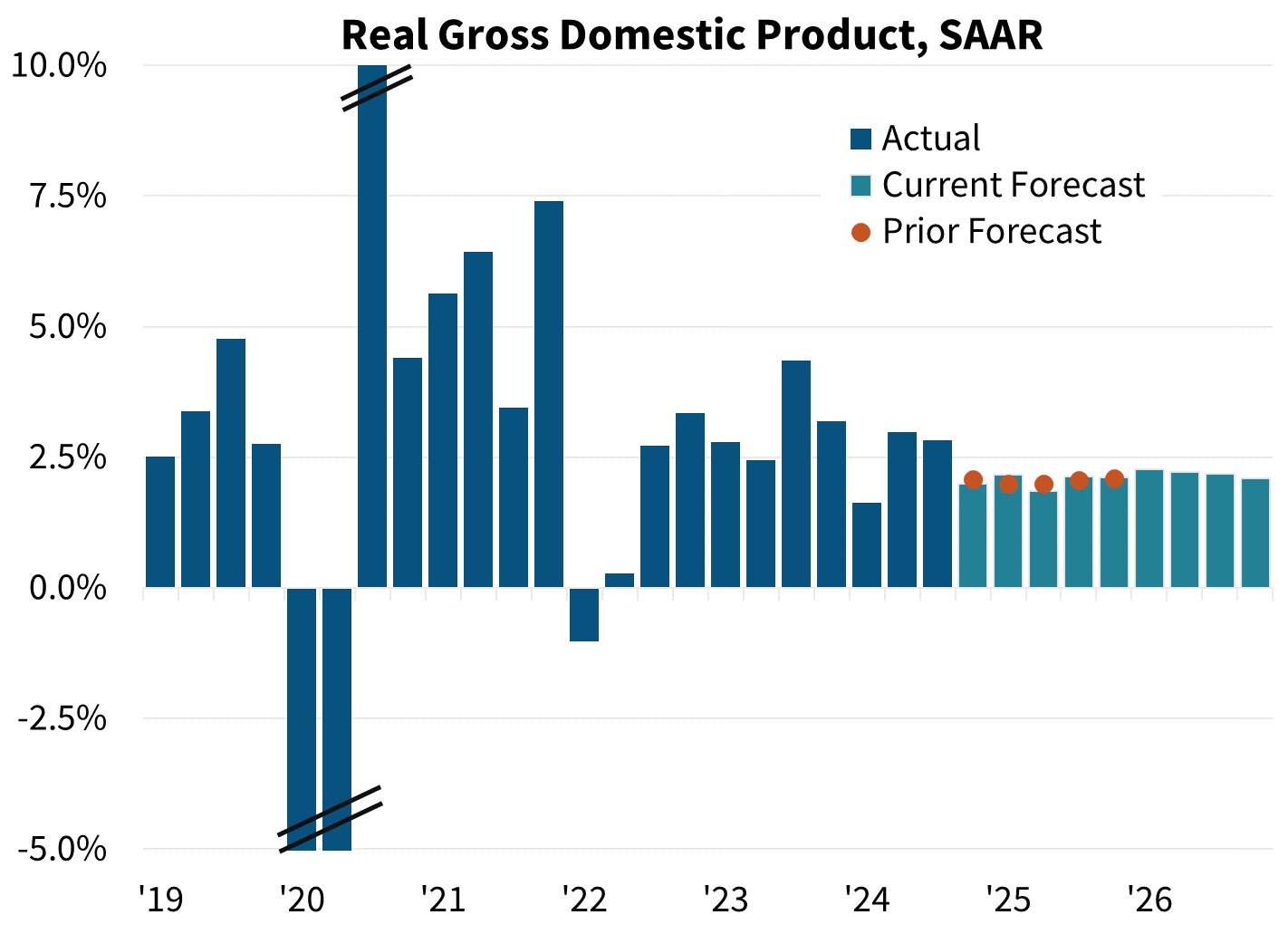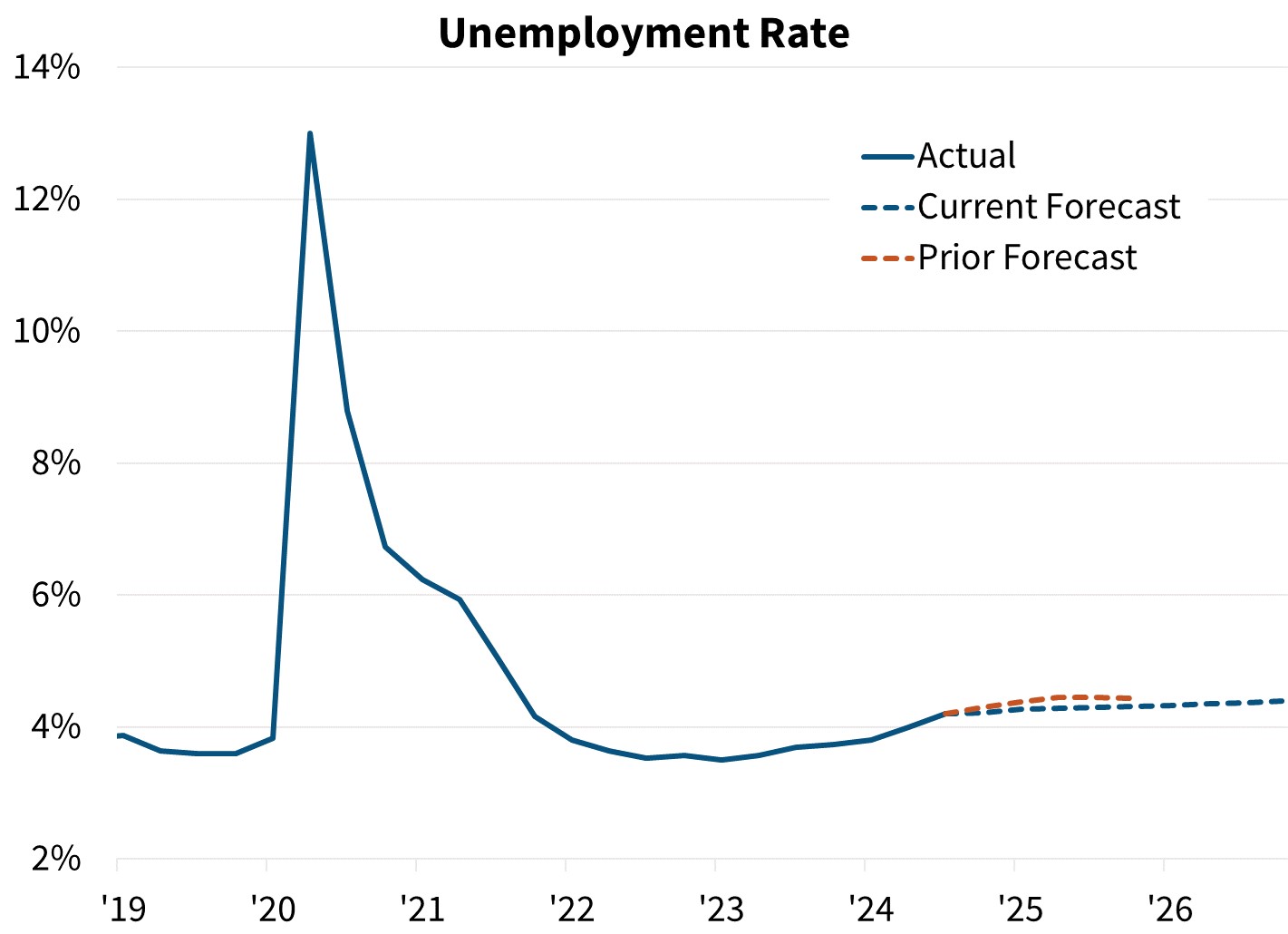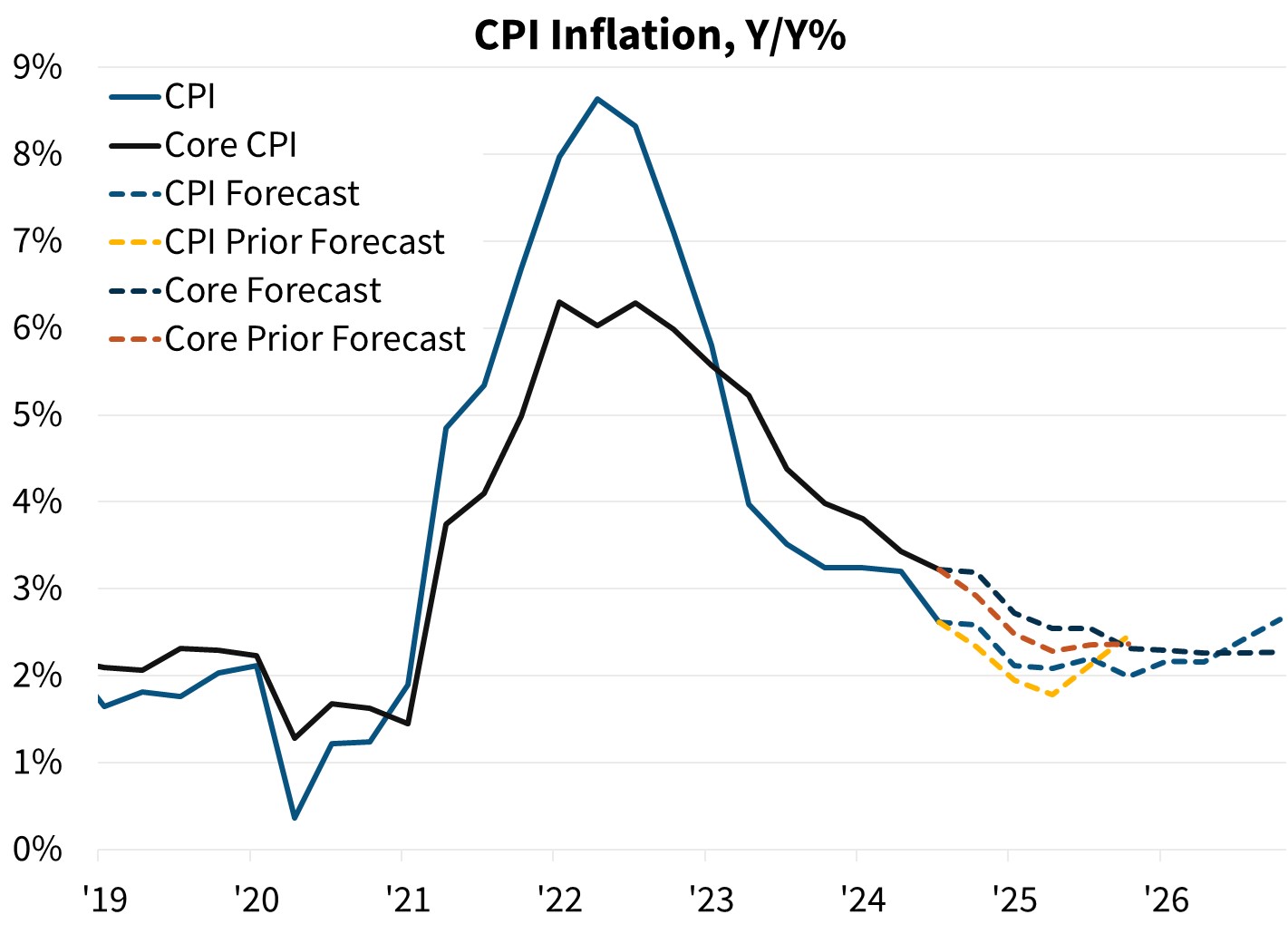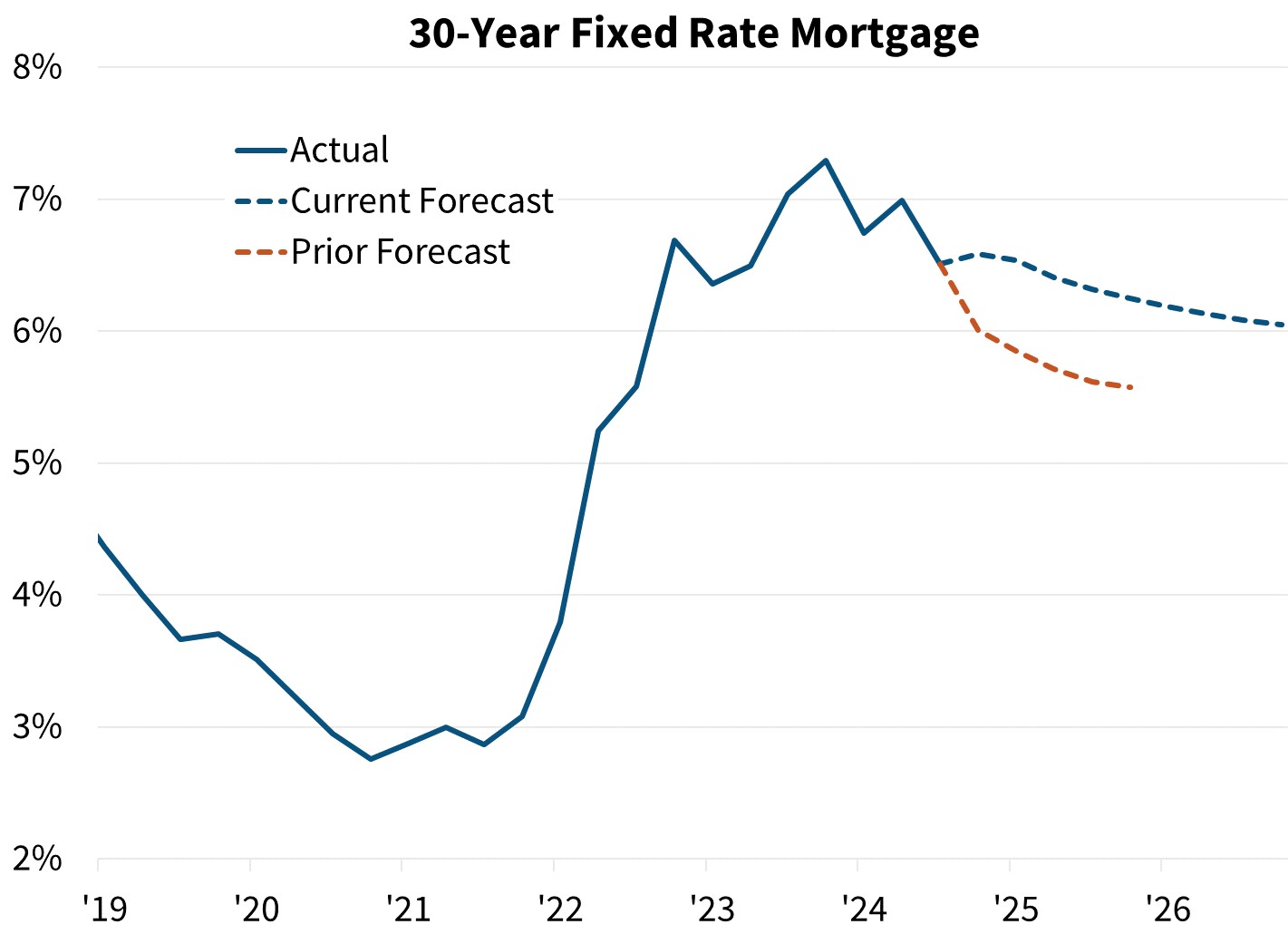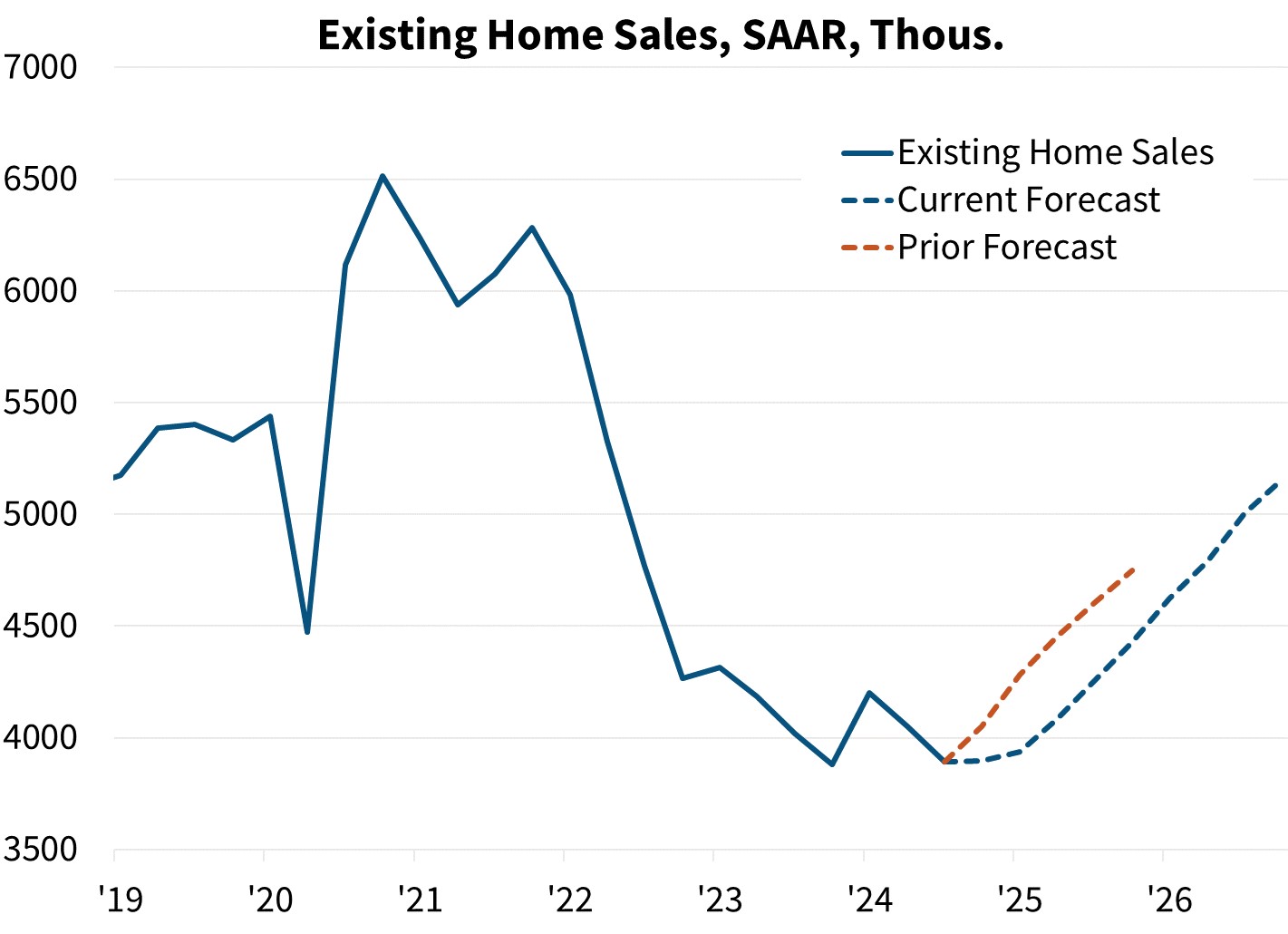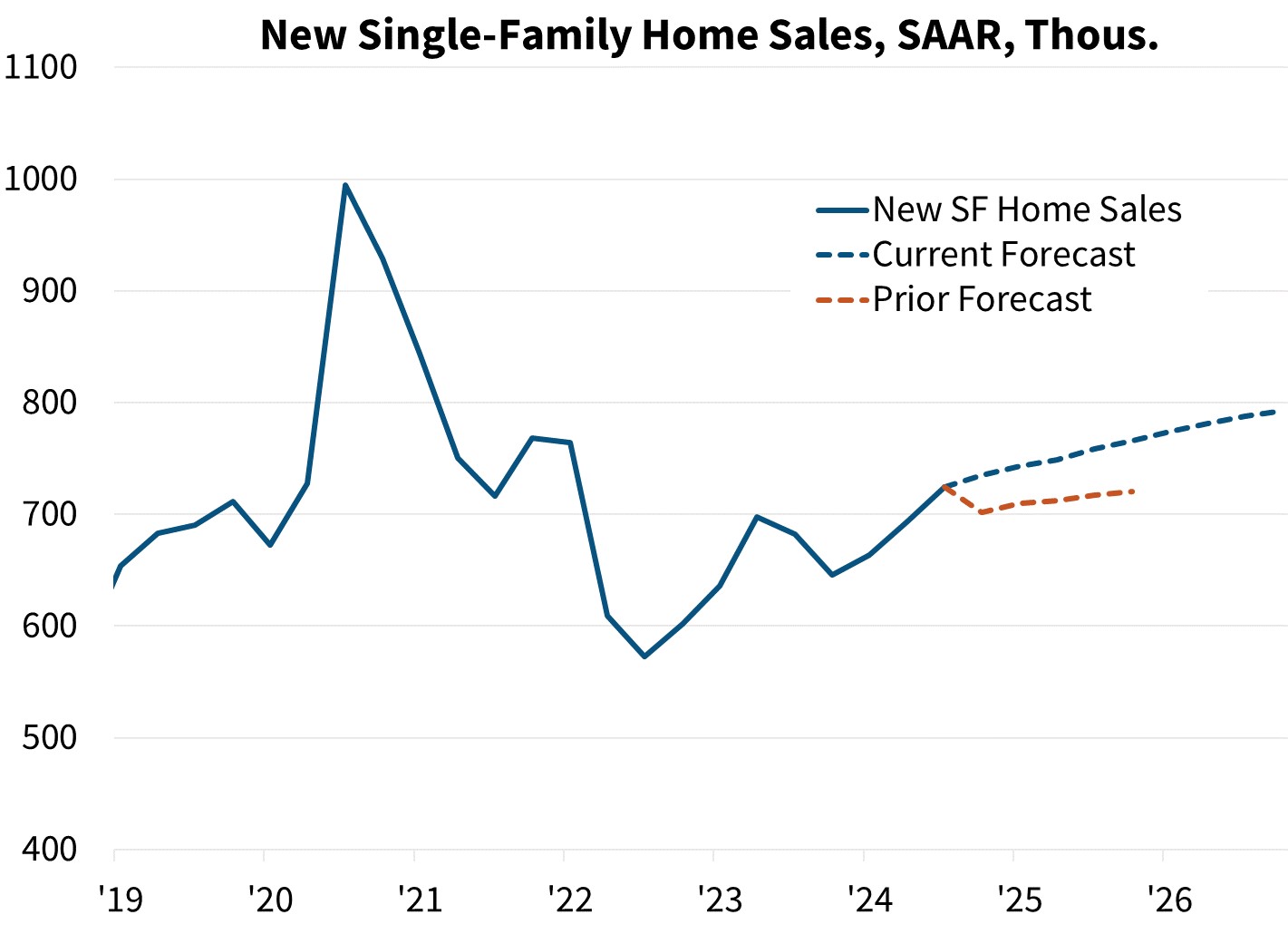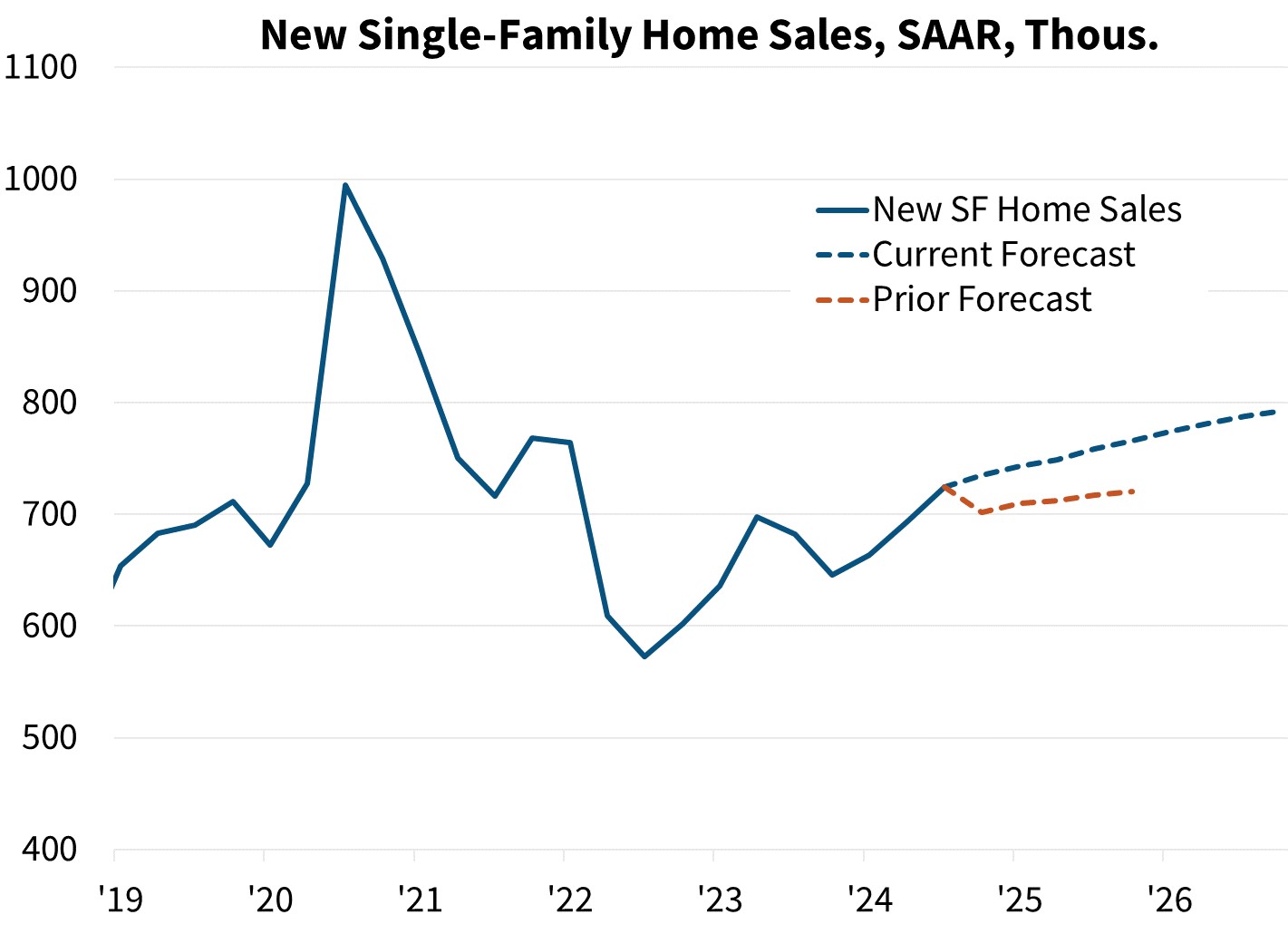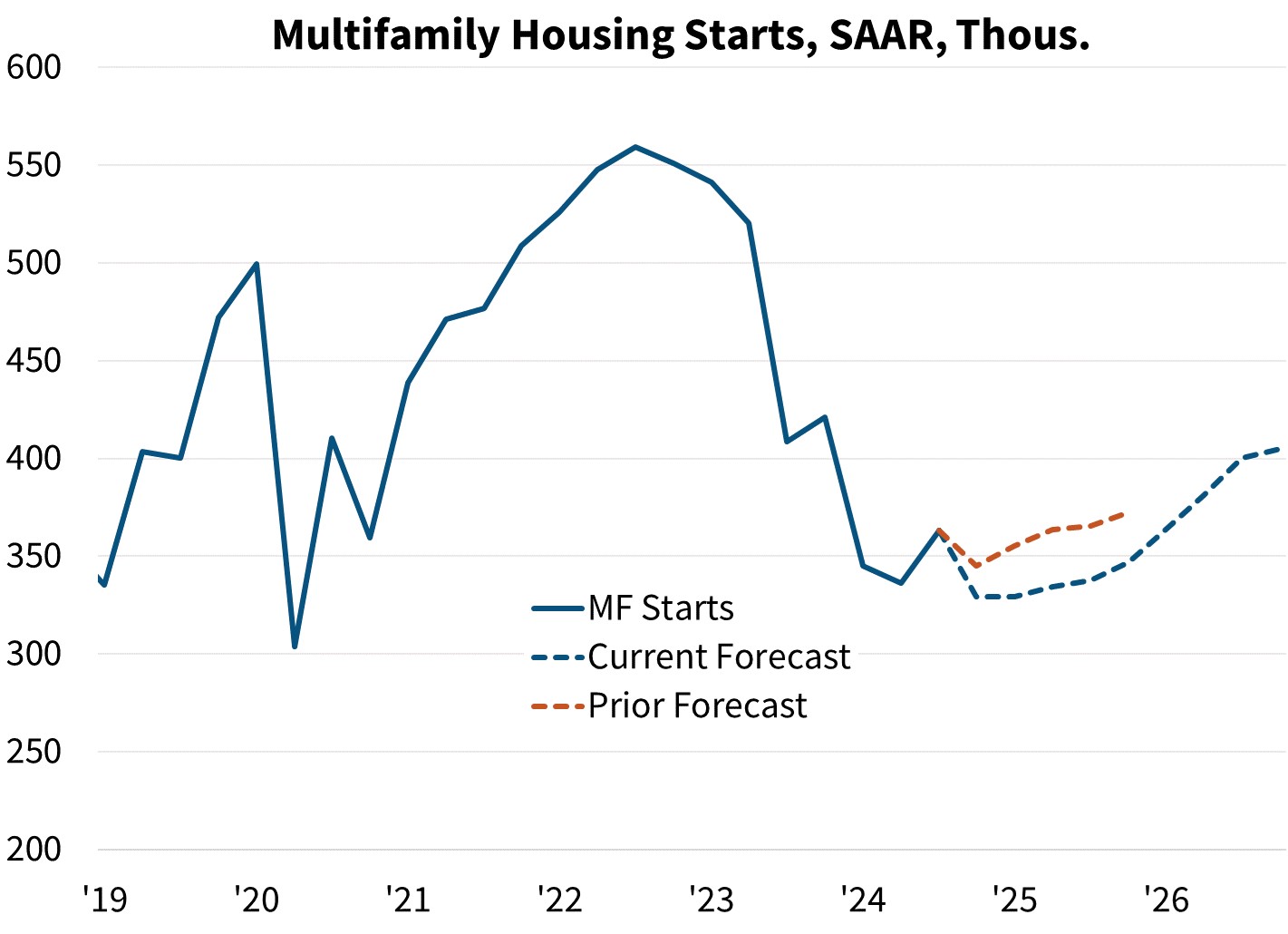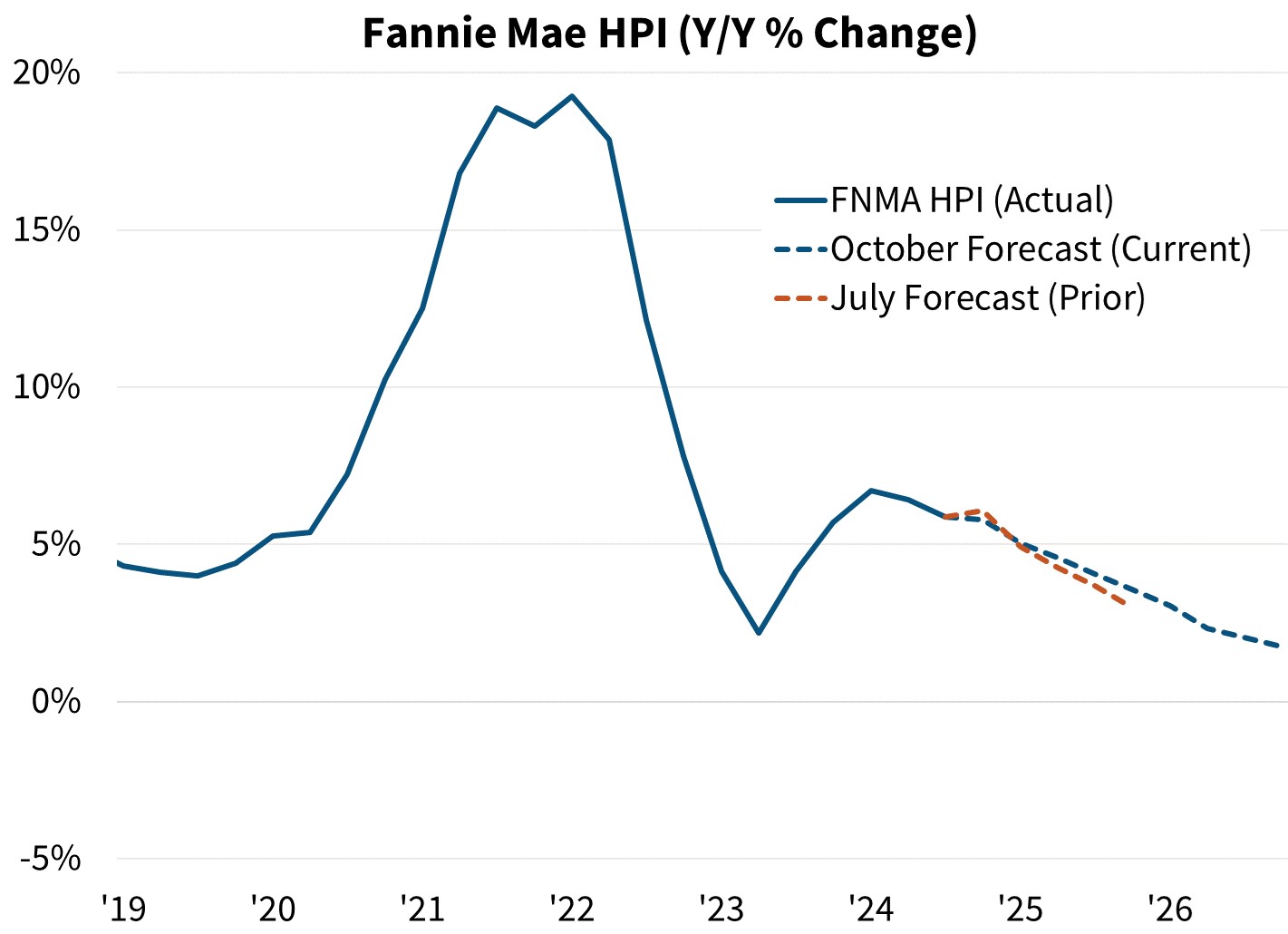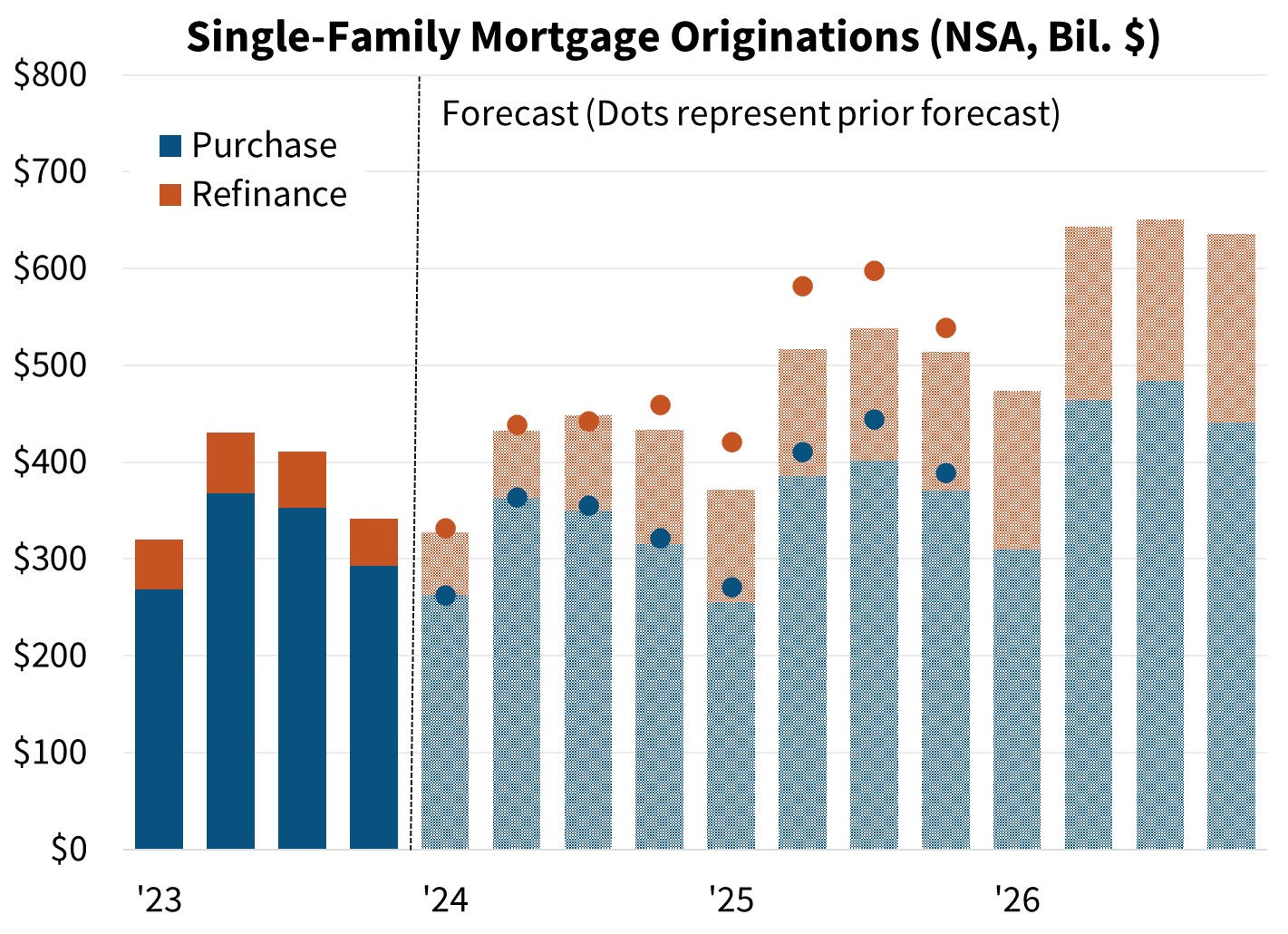Economic Developments - November 2024
For a PDF version of this report, click here.
With recent data, including third quarter real gross domestic product (GDP) being largely in line with our prior outlook, we have only minimally changed our growth forecast. We now project 2024 and 2025 GDP growth on a Q4/Q4 basis will be 2.4 percent and 2.1 percent, respectively, up one-tenth each. For our inaugural 2026 outlook, we forecast 2026 GDP growth will be 2.2 percent.
Of note this month is a revision to our inflation outlook to reflect core inflation readings coming in modestly hotter than expected. We now expect near-term core inflation to be somewhat higher compared to our prior outlook. However, due to weaker expected energy prices, we have downwardly revised our view for topline inflation next year. Combined, we forecast Consumer Price Index (CPI) inflation will be 2.6 percent year-over-year in Q4 2024 (previously 2.3 percent), will decelerate to 2.0 percent by year-end 2025 (previously 2.5 percent), and then will rebound somewhat as energy prices solidify in 2026. Core Personal Consumption Expenditures (PCE) inflation is expected to drift downward toward the Fed’s 2 percent target by 2026.
We have also upwardly revised our mortgage rate outlook given the rise in bond rates since the September Federal Open Market Committee (FOMC) meeting. We now project mortgage rates at the end of 2024 will be 6.6 percent (previously 6.0 percent) and 6.3 percent by the end of 2025 (previously 5.6 percent). This, in turn, was the primary driver of a meaningful downward revision to our total home sales outlook. We now expect 2024 total home sales will be 4.71 million (previously 4.77 million) and 2025 home sales will be 4.93 million (previously 5.24 million). For 2026, we forecast home sales will rebound to 5.68 million as mortgage rates ease, affordability improves modestly, and lock-in effects weaken.
Corresponding to a higher mortgage rate and lower home sales forecast, we have also downwardly revised our single-family mortgage originations outlook. Total single-family mortgage originations are expected to be $1.64 trillion in 2024 (previously $1.67 trillion), $1.94 trillion in 2025 (previously $2.14 trillion), and $2.40 trillion in 2026.
Following the November election, there is uncertainty over future changes to fiscal, trade, and immigration policy that could have a material impact on our outlook. Our forecast at this point does not explicitly take into account any potential changes in these areas as we await more clarity on expected policy outcomes.
Growth Outlook Sees Little Change, While Interest Rate Outlook Jumps
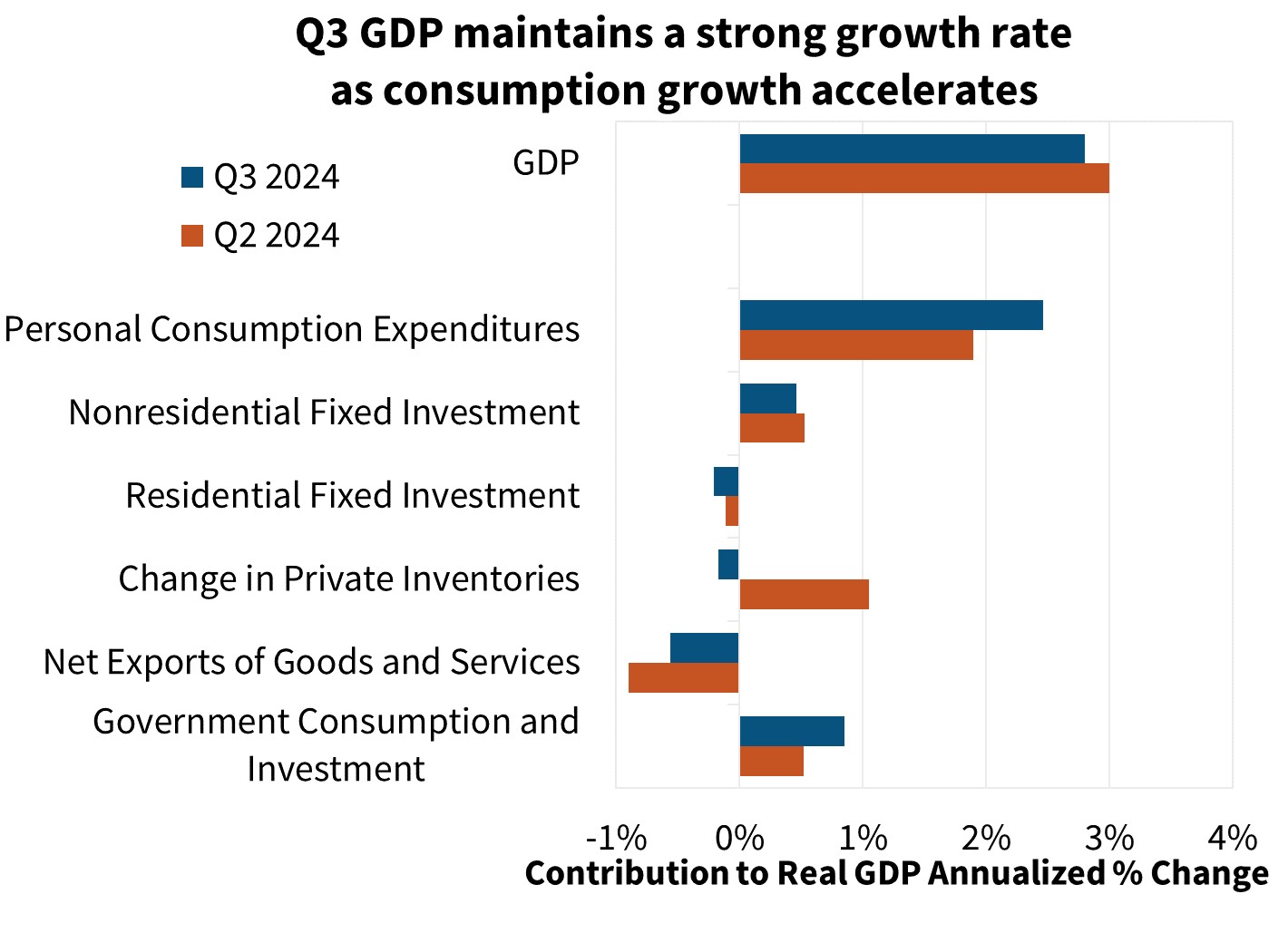
The October employment report showed a nonfarm payroll gain of just 12,000 in October, though the weakness was mostly due to significant disruptions stemming from strike activity and hurricanes Helene and Milton. While we expect November’s report will reverse this weakness, our estimate for nonfarm payroll employment growth for the fourth quarter has been revised downward to incorporate the October data. Still, our longer-run view of the labor market is also relatively unchanged. A broad spectrum of labor market indicators, such as job openings and quits, suggest that labor market conditions have softened meaningfully but have not deteriorated. We continue to expect a modest slowing in job growth through our forecast horizon, consistent with an economy near full employment.
Recent inflation data has come in stickier than we previously expected. Core CPI rose 0.3 percent for the third consecutive month in October, leaving the year-over-year comparison elevated at 3.3 percent. While lagged shelter costs continue to dominate core CPI, further progress in the core PCE price index, which puts less weight on shelter and is the Fed’s preferred inflation gauge, has also stalled, with September posting the third-consecutive 2.7 percent-year-over-year gain. Based on the incoming data, we have upgraded our 2024 inflation outlook, particularly for core CPI, with smaller upgrades for topline CPI and core PCE due to the weighting of categories that remain elevated. However, we have downgraded our oil price forecast through our forecast horizon due to recent movements in prices and softer global demand projections. We expect this will keep topline inflation readings below core inflation readings through 2025, though an expected stabilization in oil prices by 2026 will cause the topline inflation readings to rise without a corresponding increase in core inflation.
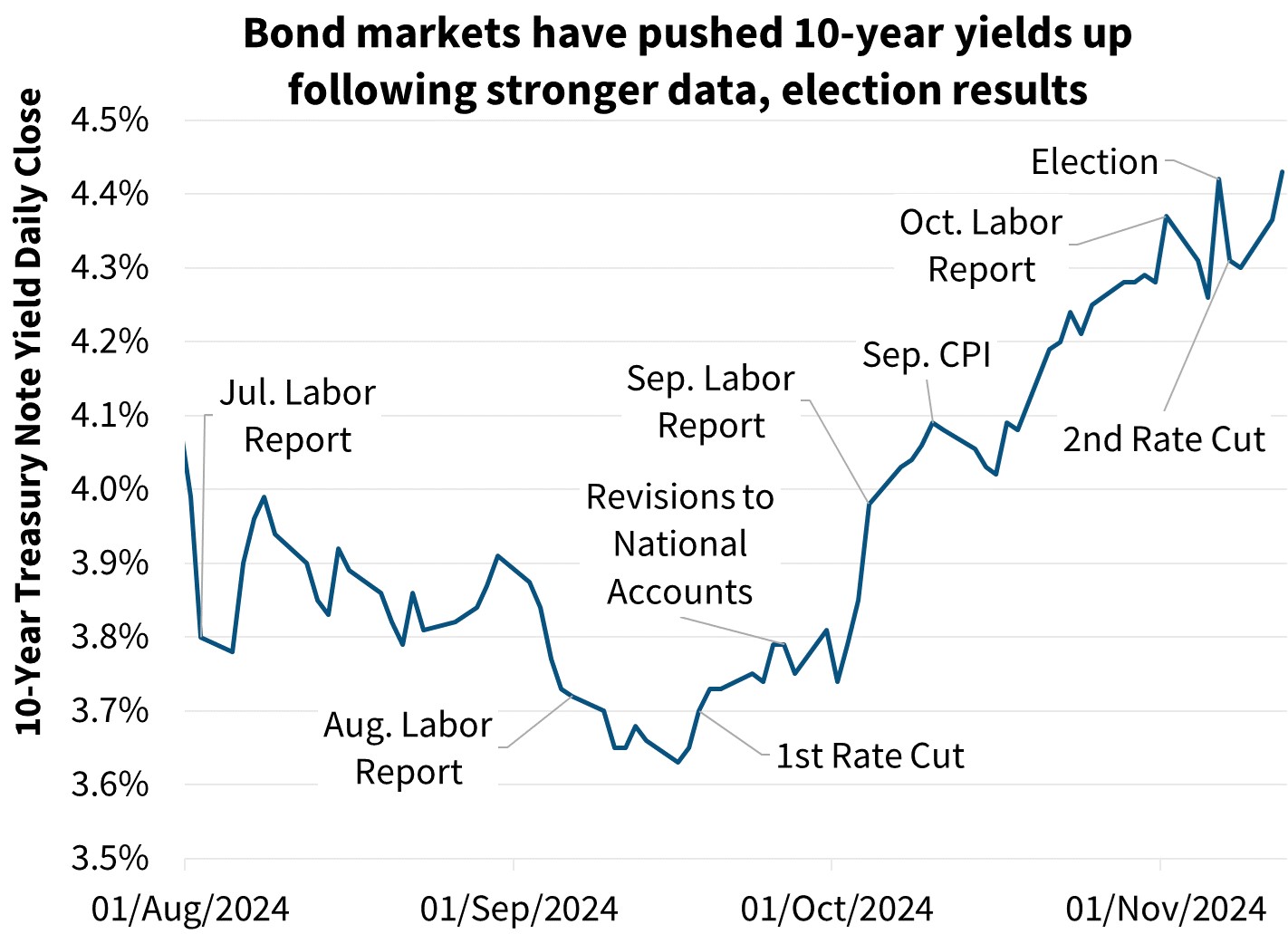
Existing Home Sales Outlook Downgraded amid Higher Mortgage Rates
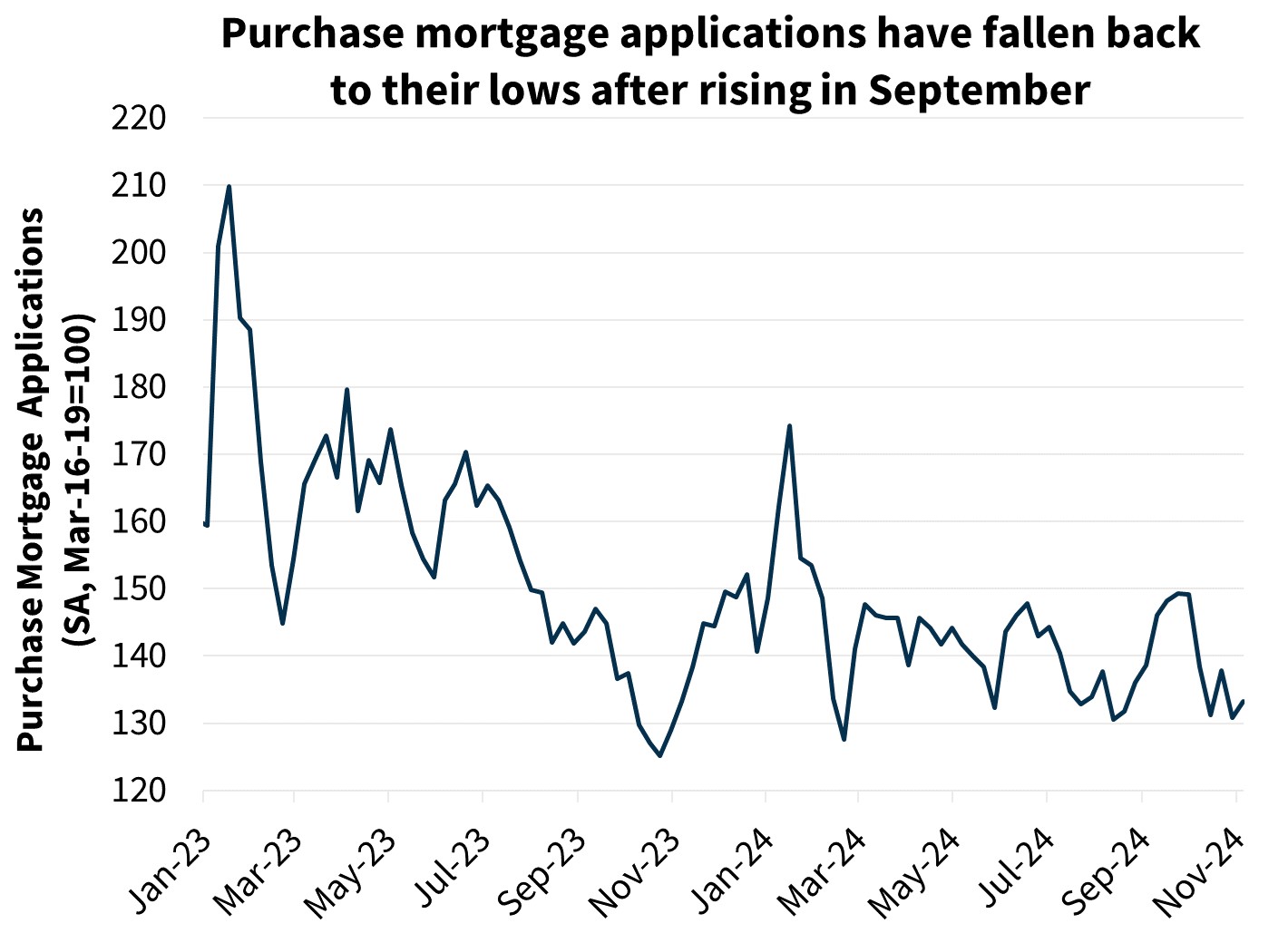
A combination of weak purchase activity in recent months and our upwardly revised outlook on mortgage rates led to a downward revision to our existing home sales outlook for the remainder of 2024 and into 2025. We now expect existing home sales will be 4.01 million in 2024 (4.06 million previously), which would represent a nearly 30-year low, and 4.18 million in 2025 (4.52 million previously). For our inaugural 2026 forecast, we project some recovery, with existing home sales rising to 4.89 million — reflecting waning lock-in effects, modest affordability improvements as house price growth decelerates, and growing pent-up demand to move.
Single-family housing starts rose 2.7 percent in September. While new home construction data is likely to remain volatile in coming releases due to hurricane disruptions, new home sales and construction remain solid despite the interest rate environment. Contingent on our macroeconomic outlook, we anticipate the general trend to continue through our forecast horizon, as homebuilders continue to indicate a willingness to use rate buydowns and other incentives to move sales even amid higher mortgage rates. With lock-in effects still strong for existing home sales, thus keeping inventories of for-sale homes constrained in many metros, many potential homebuyers will likely continue to shift to the new home sales market. We forecast new home sales will total 704,000 in 2024, before rising 7.2 percent in 2025 to 754,000 and a further 4.0 percent in 2026 to 784,000.
Economic Forecast Changes
Economic Growth
Q3 2024 real GDP rose by an annualized rate of 2.8 percent in the first reading from the Bureau of Economic Analysis (BEA), in line with our forecast. Personal consumption expenditures accelerated more modestly than expected. Therefore, our GDP forecast for total yearly growth in 2024 on a Q4/Q4 basis was revised upward one-tenth to 2.4 percent. Our forecast for growth in 2025 was also revised upward one-tenth to 2.1 percent Q4/Q4. Additionally, our forecast now includes our outlook for 2026, when growth is forecast to be 2.2 percent Q4/Q4.
Labor Market
Nonfarm payroll employment growth slowed significantly in October, rising by just 12,000, while the August and September employment figures were revised downward by a combined 112,000. The unemployment rate was unchanged at 4.1 percent. The sharp drop in payroll employment growth is mostly due to strike activity and hurricanes Helene and Milton; therefore, we do not believe it signifies sharp slowing in the labor market. Our unemployment forecast was essentially unchanged from the last forecast.
Inflation & Monetary Policy
Core inflation has proven to be modestly stronger than previously expected. Therefore, we have upwardly revised our near-term outlook for core CPI inflation. However, due to a downward revision to our outlook for energy prices, our outlook for topline inflation was revised downward later into 2025, before rising in 2026 as oil prices begin to rebound.
In terms of monetary policy, our baseline expectation is that the Fed will cut the federal funds rate by 25 basis points in December (unchanged from our prior forecast), followed by two 25-basis-point cuts in 2025 (down from a previous expectation of four cuts in 2025).
Housing & Mortgage Forecast Changes
Mortgage Rates
We revised upward our mortgage rate forecast for 2024. We forecast the 30-year fixed mortgage rate will average 6.7 percent in 2024 (up one-tenth from last month’s forecast) and will average 6.4 percent in 2025 (up seven-tenths from last month’s forecast). Interest rates remain volatile, which adds risk to our outlook. Following the completion of our beginning-of-the-month interest rate forecast and as of this writing, 10-year Treasury rates have increased around 16 basis points, leading to some upside risk to our current baseline mortgage rate forecast.
Existing Home Sales
Existing home sales fell 1.0 percent to a seasonally adjusted annualized rate (SAAR) of 3.84 million in September. Our outlook for existing home sales was revised downward notably, given the higher mortgage rate path. However, we continue to forecast existing home sales to trend gradually upward over our forecast horizon as affordability slowly improves and lock-in effects wane.
New Home Sales
New single-family home sales rose 4.1 percent in September to a SAAR of 738,000. We have upwardly revised our new home sales outlook due to stronger incoming data and a decline in the expected flow of existing homes being listed for sale, helping to support new home sales and leading to a gradual increase over the forecast horizon.
Single-Family Housing Starts
Our forecast for single-family housing starts is slightly stronger in the near term. Single-family starts rose to a five-month high in September. Overall, we continue to expect that the shortage of homes relative to the population will help spur residential construction in the coming years.
Multifamily Housing Starts
Our multifamily housing starts forecast was revised notably downward based on incoming data and higher interest rates. While the multifamily starts series is notoriously volatile, we continue to believe demographic trends will be supportive of multifamily construction in the longer term once the current high levels of units in the construction pipeline are completed.
Single-Family Home Prices
Our quarterly single-family home price forecast, last updated in October, remains, by design, unchanged this month. We project home prices on a national basis will rise 5.8 percent in 2024 and 3.6 percent in 2025 on a Q4/Q4 basis. Our next home price update will be in January.
Single-Family Mortgage Originations
We have revised downward our expectation of single-family purchase mortgage originations across the forecast horizon, given a weaker expected path of home sales and a higher mortgage rate outlook. We now expect single-family purchase originations will be just under $1.3 trillion in 2024 and $1.4 trillion in 2025, downward revisions of $14 billion and $102 billion, respectively. In 2026, we expect single-family purchase originations will grow to $1.7 trillion, as home sales are expected to continue to rebound from currently depressed levels.
We have also revised downward our expectation for single-family refinance originations, given the higher mortgage rate path in this month’s forecast. Refinance volumes in 2024 are expected to be $351 billion, a downgrade of $17 billion from the October forecast. Recent readings from the Refinance Application-Level Index (RALI) have shown that refinance application activity continues to be at a level similar to earlier in the summer, prior to the recent dip in rates and subsequent rebound. In 2025, refinance volumes are expected to grow to $527 billion as rates gradually decline, though this level is nearly $100 billion lower than last month’s forecast. In 2026, we expect refinance originations to grow to $705 billion.
Economic & Strategic Research (ESR) Group
November 15, 2024
For a snapshot of macroeconomic and housing data between the monthly forecasts, please read ESR's Economic and Housing Weekly Notes.
Data sources for charts: Bureau of Economic Analysis, Federal Reserve Board, Mortgage Bankers Association
Opinions, analyses, estimates, forecasts, beliefs, and other views of Fannie Mae's Economic & Strategic Research (ESR) Group included in these materials should not be construed as indicating Fannie Mae's business prospects or expected results, are based on a number of assumptions, and are subject to change without notice. How this information affects Fannie Mae will depend on many factors. Although the ESR group bases its opinions, analyses, estimates, forecasts and other views on information it considers reliable, it does not guarantee that the information provided in these materials is accurate, current or suitable for any particular purpose. Changes in the assumptions or the information underlying these views could produce materially different results. The analyses, opinions, estimates, forecasts, beliefs, and other views published by the ESR group represent the views of that group as of the date indicated and do not necessarily represent the views of Fannie Mae or its management.
ESR Macroeconomic Forecast Team
- Mark Palim, SVP and Chief Economist
- Doug Duncan, SVP
- Eric Brescia, Economics Manager
- Nick Embrey, Economics Manager
- Eric Hardy, Economist
- Nathaniel Drake, Economic Analyst
- Richard Goyette, Economic Analyst
- Daniel Schoshinski, Economic Analyst
- Ryan Gavin, Economic Analyst
